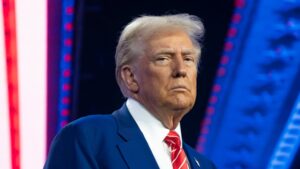Understanding the Future of U.S. Tariff Policy: Insights from the Extreme Investor Network
As the U.S. gears up for a new presidential administration, all eyes are on President-elect Donald Trump and his proposed approach to tariff policy. Reports suggest that Trump is contemplating a strategy focused on targeting specific goods and services with tariffs rather than implementing broad tariffs across the board. This nuanced approach could mark a significant shift in how tariffs are managed under a Trump administration, but what does it mean for the economy and global trade?
The Evolution of Tariff Strategy
According to a Washington Post report, the incoming administration is considering maintaining tariffs on all nations yet refining the focus to a select range of goods and services. While this plan may not pack the same punch as earlier proposals, it still has the potential to reshape global commerce significantly.
However, on social media platform Truth Social, Trump denied the claims, stating, “The story in the Washington Post, quoting so-called anonymous sources, which don’t exist, incorrectly states that my tariff policy will be pared back. That is wrong.” This denial raises questions about the internal discussions shaping economic policy in the incoming administration.
A Delicate Balance: Tariffs and Inflation
One of the most pressing concerns surrounding tariffs involves their potentially inflationary effects. During Trump’s first term, tariff impositions did not lead to significant price increases; they were, in fact, largely maintained when President Joe Biden took office. However, economists warn that the current economic landscape—marked by a $74 billion monthly trade deficit worsened by the COVID-19 pandemic—could lead to a different outcome this time around.
As Trump considers tariffs of 10% or 20%, particularly targeting key players like China and Mexico, economists are wary that such aggressive measures could trigger a renewed spike in inflation, affecting everyday Americans at the grocery store and the gas pump.
Targeted Sectors Under Discussion
Though the specifics are still under wraps, preliminary discussions reportedly focus on various industrial metals, medical supplies, and energy sectors. Each of these areas plays a crucial role in the U.S. economy, and changes in tariff policy could have both positive and negative repercussions. For example:
- Industrial Metals: Tariffs could shield domestic industries from international price fluctuations, but they might also lead to increased costs for manufacturers who rely on imported metals.
- Medical Supplies: In the wake of the pandemic, an emphasis on domestic production has gained momentum; however, higher tariffs could raise consumer costs for essential medical goods.
- Energy: Energy independence remains a cornerstone of U.S. policy, yet tariffs on imported fuels could spur higher prices domestically, creating complications for consumers and businesses alike.
What Lies Ahead
The specifics of Trump’s tariff strategy remain uncertain, but one thing is clear: the potential changes could drastically impact global trading practices and the American economy.
At the Extreme Investor Network, we understand the importance of staying ahead of economic trends. Our expertise lies in analyzing how political decisions influence market dynamics, and we invite our readers to engage with our tailored insights and expert commentary. Stay informed with us as we navigate these changes and uncover strategies for making the most of your investments in an unpredictable economic landscape.
Whether you are an investor aiming to optimize your portfolio or a curious observer seeking to understand the broader economic implications, the Extreme Investor Network is your resource for comprehensive analysis and actionable insights. With our finger on the pulse of economic developments, you won’t want to miss what’s next.

